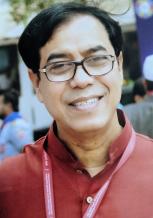SS00000287
 Dr. Saifur Rashid
Dr. Saifur Rashid
Dr. Saifur Rashid is a Professor of Anthropology at the University of Dhaka, Bangladesh and has been a member of the faculty since 1993. He obtained his PhD in Anthropology in 2005 from Curtin University of Technology, Australia, and worked there as a Post-Doctoral Research and Teaching Fellow from 2006 to 2008. Dr. Rashid has been working with various UN agencies, Government organizations, national and international NGOs, and academic and research institutions of home and abroad for last 25 years. His areas of research interest include E-Governance, Heritage, Indigenous Knowledge, Natural Resources Management, Ethnicity, Migration and Visual Documentation. He has published several books and written many research articles in refereed scientific journals. His recently authored and co-authored books include ‘Connecting State and Citizens: Transformation Through e-Governance in Rural Bangladesh (2018)’, ‘Traditional Medicine: Sharing Experience from the Field (2017)’ and ‘Pains and Pleasure of Fieldwork’ (2016), Intangible Cultural Heritage in Urban Context (2020). He has made a number of documentaries on various ICH elements of Bangladesh for ICHCAP and Google Arts & Culture and awarded Distinction Prize for one of the documentaries made for ICHCAP, South Korea. Dr. Rashid is now working on two book projects: one on ‘Intangible Cultural Heritage of Bangladesh’ and another on ‘Anthropology and Heritage’. He is also working on another two book projects: one on ‘Migration, Fraudulence and Social Mediation’ and another on ‘The Told and Untold Stories of Bangladeshi Migrants in the Europe’. Professor Rashid is a member of the ICH National Expert Committee of the Ministry of Cultural Affairs of the Government of the People’s Republic of Bangladesh and member of the executive committee of APHEN-ICH (Asia-Pacific Higher Education Network for Intangible Cultural Heritage) of ICHCAP. Professor Rashid visited more than 40 countries for attending meetings, seminars and conferences and gave lectures as key speaker and has been a Visiting Professor of Chonnam National University and Chonbuk National University, South Korea since 2015.
Bangladesh
Expert



